The undemanding, fast-growing coniferous tree of a tree, dropping into the winter, japanese-blue needles, Japanese larch, is considered one of the most attractive and high decorative plants.
Wide-grade, storey and molding shape of the crown of popular varieties of Japanese larch made a long-term culture "favorite" landscape designers when creating landscape compositions, decoration of squares or alleys.
It is very easy to grow a plant on its own very easily, and given such valuable qualities as frost resistance, drought resistance, not susceptibility to diseases and inconspicuration to soils, - the "larch-long-lived" will delight the eyes of the surrounding many years.
All about landing and care for the larch of Japanese - in this selection of material.
Larch Japanese: Interesting Facts, Plate Features
- The larch Japanese in Botanic is more known as the "Lárix Kaémpferi" or "larch of a thin-haired".
- The origin of the name "Larch" has a number of versions. On one theory, it is associated with the designation of the resin of the coniferous tree of the tree, on the other - the Lárix Lárix (larch) is translated as "fat", characterizing the high level of wood resinness. Separate and, most likely, the theory says that due to unusual for most coniferous plants, the deciduous property of perennial, its needles was compared with the leaves, therefore it was called - "larch".
- It is noteworthy that the needle of larch is not immediately, but gradually, within 2-3 years.
- The designation of larch, as "thinly" is explained by the presence of a finely peeling tree bark consisting of thin scraps. As for the adjective "Japanese" - there is the designation of the original homeland of this coniferous wood.
- The Japanese larch is a fast-growing culture, the annual increase of which is about 20-25 cm in height and 10-15 cm in width.
- Such a useful quality of the tree, as the ability to regenerate, helps perennially cope with insignificant damage or frozen shoots.
- For the formation of vital mycorrhiza, larch need symbiosis with mushrooms.
- The Japanese larch is easy to "get along" with many plants, with the exception of Elm and Birch. These trees have a too aggressive root system, inhibiting roots of larch. In order to avoid root competition, these trees are planted far from larch.
- The fruiting plant begins 15-20 years of life.
- Japanese larch is a real long-liver, its average life expectancy is about 500 years.
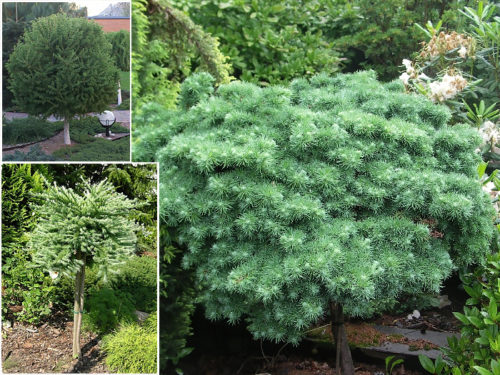
Larch Japanese, distribution and ecology
- The origin of the species is associated with a relatively limited area. The homeland of Japanese larch is Honshu Island in Japan.
- In the wild, this type of larch grows in the upper mountain forests, at a height from 1000 to 2000 m above sea level. There are often plants of deciduous conifers on dry slopes and in deciduous (mixed) forests.
- The larch on the island of Sakhalin, the East Coast of Asia has come across and spread. Later, the culture ranked huge areas of forests in Siberia and the Far East.
- In Russia, woody plant, Japanese larch, cultivated from the second half of the 19th century.
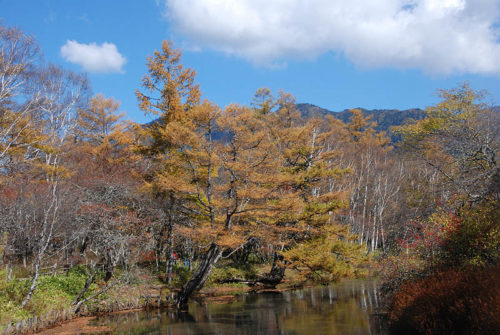
Japanese larch, plant description
- The popular type of flatfall coniferous trees, Japanese larch, belongs to the general genus of the larch from the Pine Family.
- The Japanese larch is a high coniferous tree, reaching in a height in adulthood up to 35 m.
- Similar, impressive, the height of the tree predetermined the presence of a powerful trunk plant with a diameter of 0.5 to 1 meter. The multiple trunk is a spectacular feature of this variety of larch, thanks to which Krone looks luxurious and wide.
- Branched powerful perennial roots locate deeply, providing high wind resistance "wood-giant".
- The bark of the coniferous plant is thin and dense (compared to other "conifers"), with characteristic longitudinal cracks and peeling scales. The color of the bark is brown, with a slight reddish tint.
- A distinctive feature of the species are slightly twisted branches. Moreover, annual and twilight shoots on the larch tree are distinguished. In the fall, young shoots are highlighted by brownish - yellow tint and covered with a sizzy. They can be both densely sowed and completely greasy. Two-room weed shoots are painted in a rich, red-brown color.
- The long and thick branches of the adult tree lie, to a greater extent, in a horizontal plane, forming a wide pyramidal crown.
- The needle of the Japanese larch dull, long (15-50 mm), sizo-green shades. In late autumn, the green larch is transformed: the needles becomes yellow-gold shades, due to which the tree in landscape compositions looks unusually bright and attractive. Like all representatives of larchs, the needle of the plant is falling for the winter. Kidney brown, cone-shaped.
- Inflorescences appearing on the tree are highlighted by yellow and brown-green "paints". Spherical elongated (20-35 mm) cones consist of a variety of thin scraps, 5-6 rows, bent at the top. Scales are divided into seed and crumbling, depending on the function being performed. They differ in size, shape and color.

- On the branches of the larch cone are preserved for a long time - up to 3 years. Small seeds of Japanese larch, like all conifers, covered with puffed scaly.
- The larch of the Cepeference prefers a dry cold climate, not afraid of returned spring frosts and makes a good shading well.
- In addition to frost resistance, long-term coniferous culture is little susceptible to pest attacks or damage to diseases.
Japanese larch, value and application
- Like any other coniferous plant, the most valuable part of the Japanese larch is considered wood. Plants of the genus larch have a very durable and resistant to rotten rotting. Along with such valuable qualities, wood is easily processing, which made it popular in the construction and furniture industries of production.
- Highly decorative culture, Japanese larch, is often used to landscap in various kinds of landscapes, with the landscaping of the municipal or private zone. Spectacular strawabs of coniferous wood look perfectly in urban squares and parks, on large squares and spacious inseptic sites. To the urban conditions, the perennial is fully adapted and is well developed even in places of increased gaspace, cleaning and ionizing the surrounding air.
- The Japanese larch is planted with groups, for massive landscape compositions, or as a single dominant landing that attracts universal attention. Larch group plantings are often combined with planting plants such as: pine, spruce, juniper, oak, linden, rhododendron and ash.
- The dwarf form of plants is very popular in Japan for growing room mini-copies of trees, in the Bonsai technique.
Japanese larch, popular varieties and varieties
Consider the most popular and beautiful varieties of Japanese larch, successfully cultivated in the horticultural environment of our country.
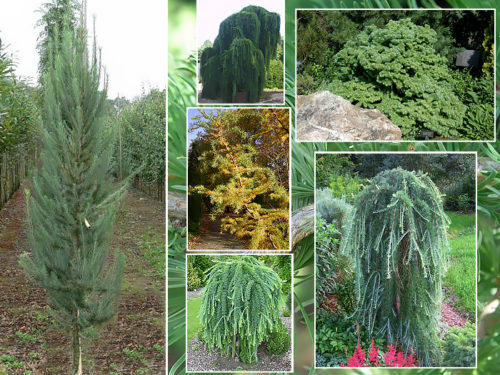
Larch Japanese "Pendula"
- Weaving the decorative form of larch Japanese, "Pendula", grows relatively low (6-10 m) compact trees. Landscape designers grown by this type of larch attracts a slow growth rate of a coniferous tree. This quality allows for a long time to retain the intended, initial type of landscape.
- "Larch Japanese Pendula" stands out by its picturesque hanging to the ground branches. As it grows, the "bugs" shoots begin to step on the ground with a decorative vegetable "carpet".
- The needle from the variety is soft, the sizogo shade. Trees are unpretentious in leaving, undemanding to soils, although they are best growing on a fertile drainage soil. The plant does not tolerate wetlands.
Larch Japanese "Stew Virter"
- The larch Japanese "Stifed Virter" is a coniferous breed of leaf fall trees on a strain, and is characterized by long, making on earth, shoots.
- The vaccination location predetermines the future form and height of the plant. Usually, weaving a variety of larch is growing no more than 2 m in height and 1 m to the diameter of the crown.
- The needles of this type of larch is a blue-green shade, falling in winter. In an adult tree, men's (yellow) and female (reddish-brown) cones are clearly noticeable.
- Beautiful and attractive Crown "Stifed Virter", with a small number of lateral shoots, allows you to use a variety in many landscape compositions.
- The larch Japanese "Stifed Virter" is planted as a single dominant fit and group mixed compositions.
- The low-speed larch variety is demanding of high humidity and does not tolerate both drought and stagnation. The variety is frost-resistant, light-see.
Larch Japanese "Diana"
- Beautiful and elegant variety of Japanese larch, differing from others unusually swirling, spiral shoots and bumps, bright pink colors.
- In the height, an adult larch Japanese "Diana" reaches 8-10 m. In width, a semi-shaped crown grows up to 5 m.
- The needles are painted in a gentle lightweight shade, which with the onset of autumn "is converted" to the flame yellow. Saturated bark.
- Saplings grow quickly, but with age, growth rates are noticeably reduced.
- This larch variety prefers wet and alkaline soils. Culture of frost resistant and light-cup.
Larch Japanese "Blue Dwarf"
- The larch Japanese "Blue Dwarf" differs from other varieties of celestial needles. Soft needles are yellow, and they suck on the winter.
- The dwarf and compact larch variety on the strain is increasing not higher than 0.6 m, with the same diameter of the crown of an adult plant formed.
- The variety is characterized by increased winter hardiness and gas resistance. Culture prefers an open sunny terrain or light half, as well as wet, nutritious soil.
- The dwarf variety of decorative larch is used for growing in mountaineering, rocky gardens, coniferous compositions and for the formation of natural hedges.
Larch Japanese "Blue Rubbit"
- The larch variety of Japanese Blue Rabbit is recognized as one of the most beautiful and spectacular. Silver-blue needles and spherical cones of a yellowish shade are the main distinguishing characteristics of this type of larch.
- A deciduous conifer with age changes the shape of the crown: from a narrow cone to a wider format of the same cone.
- In height, the tree can grow to 15-20 m. The rate of growth in this average.
- The culture of the wind and winter-resistant is not subject to pest attacks and defeat various diseases.
- The plant regularly needs trimming, sun terrain, while not making drought or moisture stagnation.
Buy Japanese larch seedlings in online stores, garden exhibitions, specialized points of sale or in botanical nurseries.
Japanese larch is distinguished by a large variety variety and, as a rule, is offered in the form of vaccinations on the strain. The height of such plants depends on the height of the stammer and place of vaccination.
Although, you can over time to independently increase the height of the village with drooping branches. To do this, choose the most powerful escape and straighten it by fixing to the support. After a few years, such a manipulation is carried out with other shoots hanging from the new top. As a result, it turns out an unusually attractive tree with diluting branches along the entire length of the strain.
Japanese larch, landing features
The landing of the Japanese larch seedlings is carried out in early spring, to the dissolution of the kidneys, or in the fall, as a rule, during the start of the leaf fall.
The most favorable time to plan the young larch trees to the ground for a permanent place is the 1-2-year-old age of seedlings. At the age of 2 to 6 years, the seedlings are better to plant in a soft container, and at the older age - exclusively in a tough container or frozen soil lump.
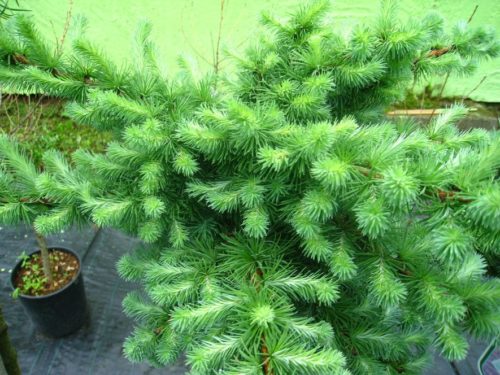
Choosing a place to land a Japanese larch
Choosing a place to land, it is important to study the basic preferences of many years of culture. And considering the fact that the larch Japanese is a real long-lived, one should initially think over and choose a suitable place for the coniferous wood for many years.
- Japanese larch prefers fertile drainage soils with neutral, weakly alkaline or weakly acid medium reaction. Moreover, culture is rather non-addictive to the soil composition. The plant will greatly develop on the clay soil or in mixed loams, chernozem and subzoles. Does not tolerate the culture of wetlands, growing worse on sandy soils.
- A place for planting a light-sound larch need to choose an open and sunny, light half is possible. Drafts and winds the tree is not afraid, thanks to powerful and deep roots.
- Having worn and life-taking culture, Japanese larch, perfectly "feels" in urban, smoke and rided conditions.

Agrotechnology landing larch Japanese
- Hut down on the site several seedlings of many years of larch, it is necessary to leave the distance between the trees at least 2-4 m, taking into account the specific variety and the further growing of the coniferous tree.
- Preparatory work is underway before landing: the landing pit is running around and it is preparing for a leafy of land, sand and peat in a ratio of 3: 1: 2, respectively.
- The depth of the landing pit will be about 70-80 cm. When planting seedlings, it is important not to damage vital mikuriza (useful symbiosis with mushroom mycelium), which has a young, thin root.
- In case of dense clay soils, the bottom of the landing pit is necessarily laid a drainage layer, a thickness of at least 20 cm. A broken brick, slate or crushed stone suitable for drainage.
- A seedling vertically placed in the pit, roots spread, fall asleep prepared soil. Periodically, the landing site is tamped to avoid the formation of voids.
- The root neck during landing does not plunge. After landing, the seedling is spilled by water.
- Japanese larch calmly transfers a transplant to 20 years of age. Naturally, the older the plant, the worse it will be adapted to the new place.
Japanese larch care
The care of the larch of Japanese does not represent absolutely no difficulty. Adult tree practically does not require additional attention. Watering, loosening and feeding is important only at the stage of formation and development of a young plant.
Watering and loyalty of the larch of Japanese
- Regular watering is especially important for young larch seedlings. In summer, young trees are watered 1-2 times a week. Watering rates depend on the climatic conditions, the composition of the soil and the location of the tree. On average, one young plant will require 1.5-2 water buckets.
- Adult trees need more rare watering, and even that, only in the dry time of the year.
- The coniferous culture on the sprinkling crown is beneficial.
- The looser is carried out only when the trees are young, for adult copies, this agricultural reception is optional. The same applies to the removal of weed herb. Especially important, weeding during the development of young seedlings.
- Excellent results gives the procedure for mulching the priority circle of a larch seedling peat or wood sawdust.
- Given the beneficial influence of mycorrhuses formed on the roots of the plant, it is useful to water larch trees with water after washing mushrooms (white mushrooms, oil, boosaine, etc.). Water with mushroom disputes will become a real "gift" for coniferous larch. Experienced gardeners recommend even planting old or worm mushrooms around the larch with mature disputes on them.
Trimming larch Japanese
- Moderate pruning of Japanese larch, but only at a young age.
- Mature coniferous trees in forming trimming do not need.
Fingering larch Japanese
- Putting fertilizers and additional feeding plant is needed only at a young age. Adult trees do not need such procedures.
- For feeding of young, you can use specially balanced complex fertilizers for coniferous trees. You can use, for example, the mineral fertilizer of "Kemira", at the rate of 100-150 g per 1 m 2.
- Fertilizer make early spring before the compelling process.
Fighting diseases and pests of larch Japanese
Like any other coniferous plant, Japanese larch practically does not suffer from the attacks of pests or damage to diseases.
Although occasionally, under adverse environmental conditions, some pests or fungal diseases may appear.
- The foliage mole and coniferous Cherweans makes the havoy of a tree with light and flabby to the touch. To combat pests, all infected shoots are cut off, and in the case of an extensive zone of damage - the plant is treated with an insecticidal preparation with a content of mineral oils.
- If the needle of the larch in some places is strongly yellowed and cheered - it is possible to attack the coniferous tli (Hermes). It is also possible damage to the needles and shoots of culture caterpillars of larch leaflet or a striped larch sawer. The affected areas of the plant spray chlorophos or Fosalon.
- In the spring, the young needle can become a favorite food for caterpillars of larch cover. In this case, the spraying of Rogor and chlorofosoma helps, with a re-course at the beginning of summer.
- In order to "do not bother" bugs-cores, Louboe or Usachi, the trunk and a rolling circle of wood are treated with a solution of decisum or carbofos.
- High humidity for a long period can provoke the development of fungal diseases. Brown spots on the needle testify about the infection of the plant with mold fungus spider. If you do not struggle with the mushroom, the affected needles gradually begins to be down. Bordeaux liquid or 2% solution of colloidal sulfur is used to combat and prevent the disease.
- The decryption of the trunk and roots of the Japanese larch can cause the parasites mushrooms: bordered rotary, root sponge, etc. In this case, copper sulfate is useful or nitrophen.
Shelter for the winter larch Japanese
- Strip the larch for the winter (and during the period of spring frosts) only in the phase of the rapid young seedlings. For these purposes, kraft paper is perfect (high-strength packaging material).
- Winter-hardy adult larch in additional shelter for the winter does not need.
- Even the shoots damaged by spring return freezes are rapidly restored and all negative consequences disappear by summer.
Reproduction of Japanese larch
- Most often, the Japanese larch is grown from seeds. The hauling is possible, but is very laborious and ineffective. Specialists can multiply valuable grade larch with vaccination.
- To get seeds, in the fall they collect cones of the current year and leave them in a dry warm place for aging. When they reveal, it will be easy to get seeds. Before planting, the seeds are soaked (in a cool place) for 2 days in water. In winter, seeds are sown in containers with light soil. In the spring you can suck seeds into a good warm soil. Sowing is carried out thick and not deep (5 mm), given the low germination of seeds. Seedlings provide humidity, heat and light. In the container, seedlings are growing 1-2 years old, and then them, in the spring, transplanted to school. Fast-growing 5-year-old seedlings reach a height of about 1-1.5 meters.
- The seed method is a long time-consuming process, so many connoisseurs of "coniferous beauty" prefer to buy ready-made seedlings.
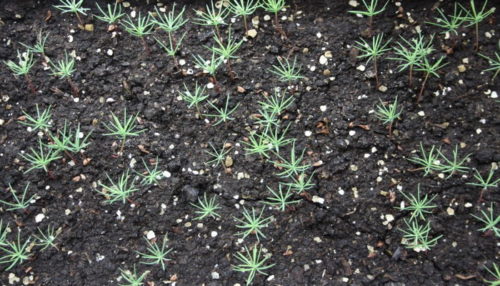
Thus, the Japanese larch has a number of advantages and advantages that makes it possible to grow "coniferous beauty." Perennial culture is growing rapidly, it is not afraid of frosts and little susceptible to pests. An adult larch plant is untranscript to soil conditions, watering, feeding and shelter for the winter. Compared to other types of larch, a Japanese variety tolerates the best shading.
It is impossible not to note the main advantage of the coniferous breed - high decorativeness and attractiveness. An unusual shape of the crown, bright bizarre cones, a long joy-blue needle, painted in the autumn period in the fiery tones, unpretentiousness in care, - quality data allowed to conquer the honorable place from many landscape designers and amateur gardeners.

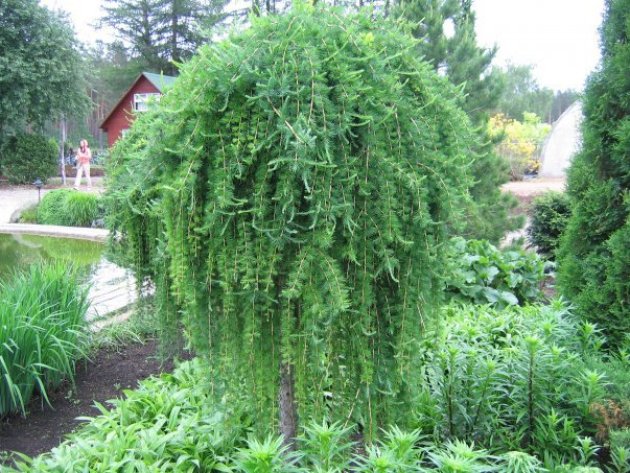




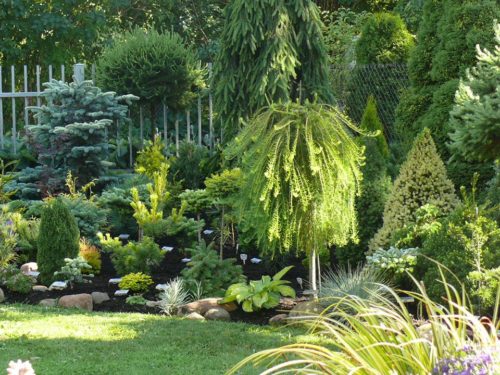
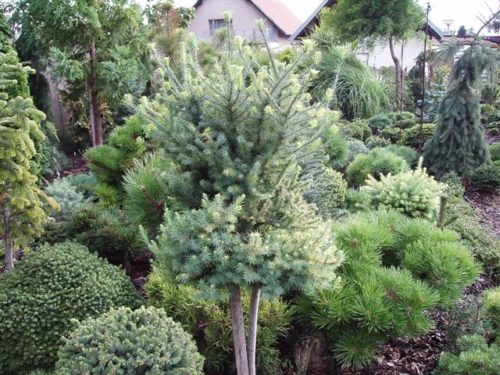
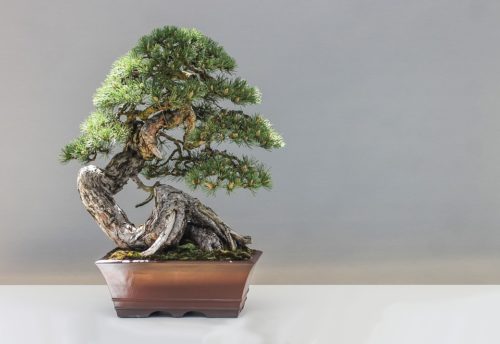


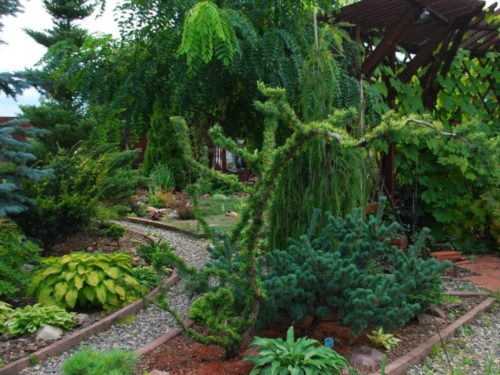

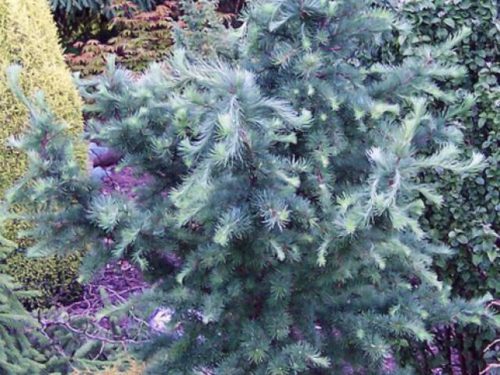
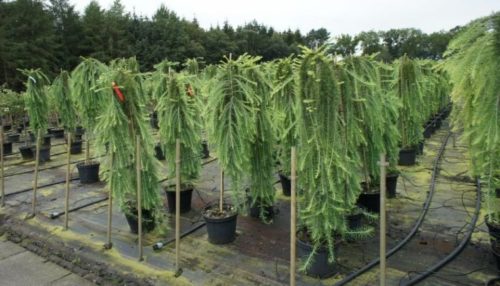
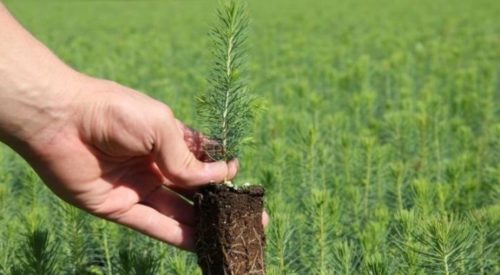
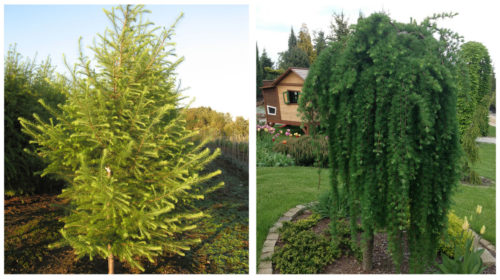
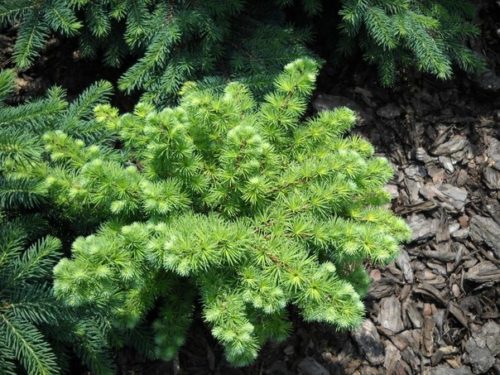
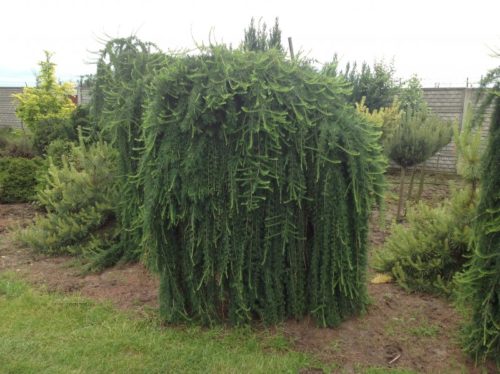
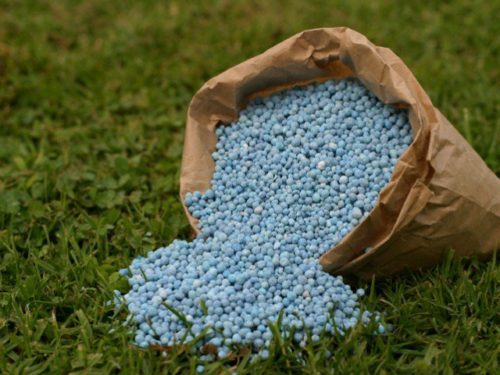
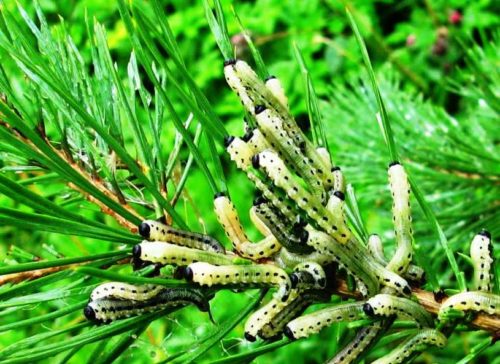
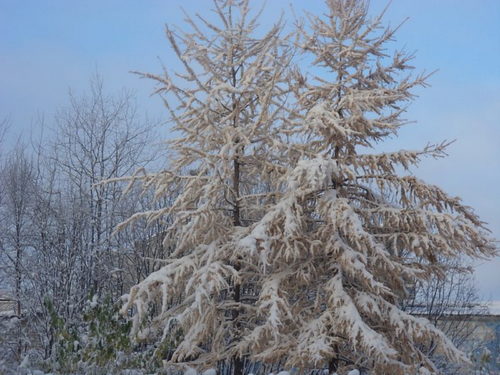
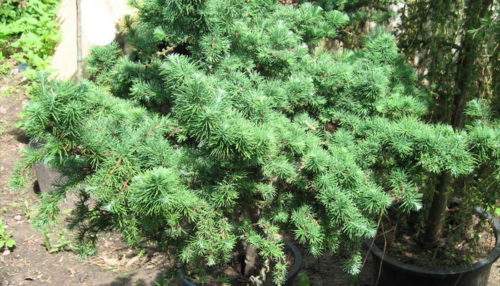


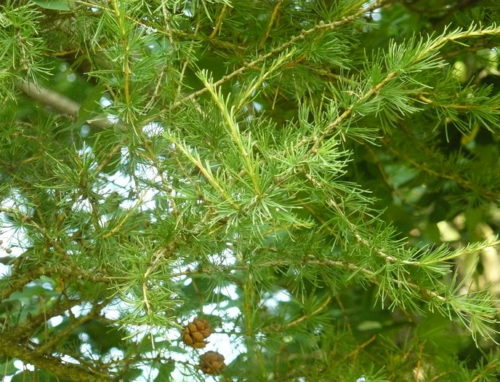
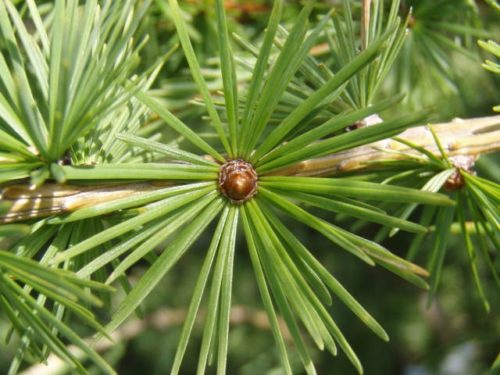

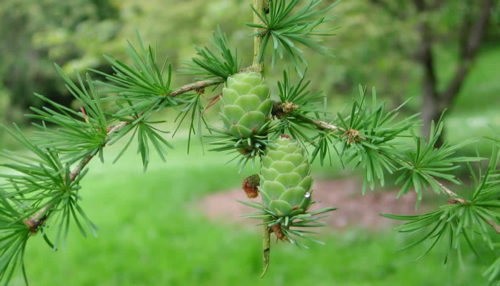












 Start a discussion ...
Start a discussion ...